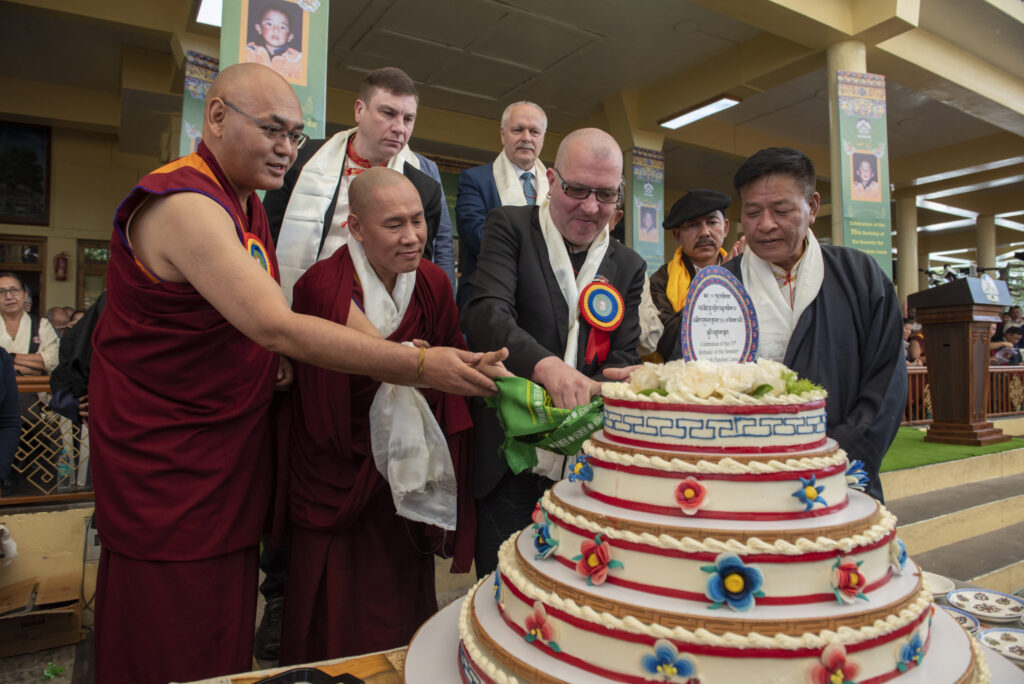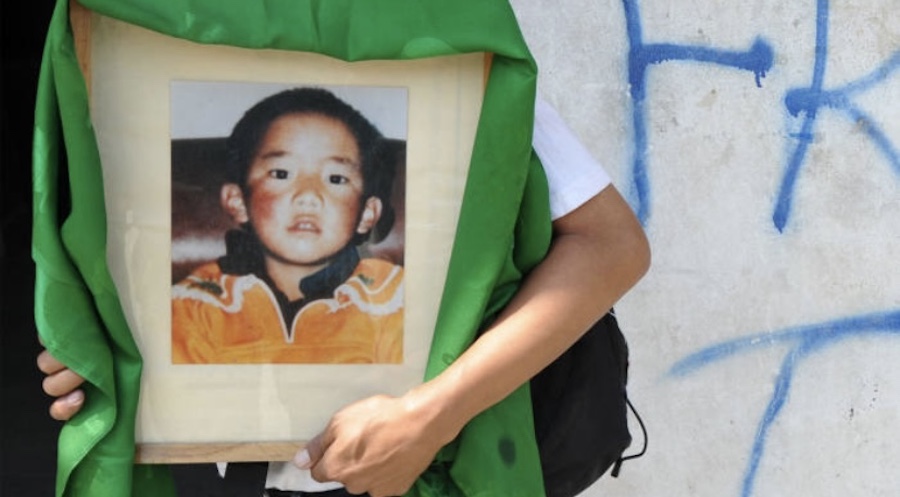By Tsering Y Nyingpo, Boston
 For the first time – as is for the filmmakers, Tenzing Sonam, a Tibetan and his Indian wife Ritu Sarin, Dreaming Lhasa is their debut feature film. Although not new to the medium of filming, the husband and wife team are credited and honored for their numerous Tibet-related documentaries.
For the first time – as is for the filmmakers, Tenzing Sonam, a Tibetan and his Indian wife Ritu Sarin, Dreaming Lhasa is their debut feature film. Although not new to the medium of filming, the husband and wife team are credited and honored for their numerous Tibet-related documentaries.
This 90-minute film starts with Dhondup, one of the two main characters as he puts his head out of a moving bus to puke. The sign on the side of the winding road says 25 kilometers to Dharamsala.
The main character Karma, a 30-year-old Tibetan filmmaker from New York, goes to Dharamsala to connect with her roots and to document refugees from Tibet. But Dhondup moves the narrative of the film. He comes to India with a mission – not to flee from Tibet but to fulfill his mother’s dying wish – to return an amulet to the sole owner.
We get a sense of what Karma experiences in Dharamsala – new place and new people – though fellow Tibetans. We also find out more about her life in New York when the camera zooms in to a framed picture on the table.
After Dhondup and Karma, we meet Jigme – who helps Karma with her documentary. A young man who is genuine, honest and totally lovable. “You have to be careful with these guys from Tibet. They look shy but they are fast,” he tells Karma after briefly meeting Dhondup. This may be his first acting job but he brings much warmth to the screen and we believe this guy.
All these characters move forward in search of the amulet’s sole owner. And this search takes them to various Tibetan settlements in Northern India.
If one were to look for the strings that lift the narrative threat horizontally, it may very well be the dialogues between the characters, especially Jigme and his friends. These dialogues give you more than an insight into the minds of these young Tibetans. They seem determined but also carefree. They question their lives, the future of Tibet – all that is in conflict within. That’s the strength of this film.
The dialogues seem plucked directly from real conversations that many Tibetans in Exile and in Tibet may converse and connect without lifting a brow.
For Dhondup, he speaks his heart with an indifferent directness that is humbling and refreshing. When pressured to sing a Tibetan song, he sings, “If you ride a horse. Don’t ride a Chinese horse. Chinese horse cannot be controlled.”
This film is also a docu-drama and the filmmakers keep a good balance between the two. Throughout the film, we are introduced to serious subjects. We meet and hear testimonies from the Tibetan nuns who made it out of Drapchi prison.
The film as a whole is like a pair of long braided hair of a Tibetan amala. One is the documentary side of the film as the nuns narrate their prison experiences in Tibet. The other is the fiction side with Dhondup, Karma and others and the obstacles in their lives. The two braids are woven together to provide a fuller depiction of Tibetan life in exile and the two are woven together by the bright colored silk tassel that hold the braids together at the end.
Sonam and Sarin’s first bite into the world of fiction delivers not just the technical expertise of filmmaking but more as they open the door to the world of Tibetan refugees in India. The door opens wide and welcomes the audience inside the heads of young Tibetan refugees and their outlook on their future. A future that offers limited avenues towards really doing something for Tibet’s independence but the longing to gain independence for their country is a part of their every day life – whether active or passive in their efforts. This film gives a good insight into the lives of Tibetan youth in Exile and their aspirations and dilemma.
Following the likes of M. Night Shyamalan who follows Alfred Hitchcock, the filmmakers too make a cameo appearance in this film. Just keep an eye out when the music plays and the lights are dimmed.
TO OPEN IN SELECT U.S. CITIES:
New York, NY
ImaginAsian
239 East 59th Street (bet. 2nd and 3rd)(212) 371-6682)
Opens April 13, 2007
Chicago, IL
Siskel Film Center
April 20 – 26, 2007
Seattle, WA
Northwest Film Forum
May 4 – 10, 2007
Santa Fe, NM
CCA Cinematheque
May 4 – 13, 2007
Boston, MA
Museum of Fine Arts
May 4 – 27, 2007
Atlanta
High Museum of Art
May 18, 2007
DREAMING LHASA
2005, 35mm, 90 minutes, color, in English and Tibetan w/English Subtitles, India/UK
Directed by RITU SARIN and TENZING SONAM
Produced by RITU SARIN; Written by TENZING SONAM
Executive Producers JEREMY THOMAS, RICHARD GERE, RAJ SINGH
Director of Photography RANJAN PALIT
Editor PAUL DOSAJ; Music ANDY SPENCE; Sound PM SATHEESH
Cast:
Dhondup JAMPA KALSANG; Karma TENZIN CHOKYI GYATSO; Jigme TENZIN JIGME
Loga PHUNTSOK NAMGYAL DHUMKHANG; Tse Topgyal TSERING TOPGYAL PHURPATSANG; Ghen Rabga TENZIN WANGDRAK; Dekyi LOBSANG CHOEDON; Penjor SONAM PHUNTSOK; Lee TSERING NGODUP
Filmmaker Ritu Sarin was born in New Delhi. She finished her schooling in London and did her undergraduate studies at Delhi University. Having always had a passion for the cinema, she then did an MFA in Film and Video at the California College of the Arts in Oakland.
Filmmaker Tenzing Sonam was born in Darjeeling in northeastern India of Tibetan refugee parents. After graduating from Delhi University, he worked for a year in the Tibetan Government-in-exile in Dharamsala. He then studied at the Graduate School of Journalism at the University of California in Berkeley, where he specialized in documentary filmmaking.









